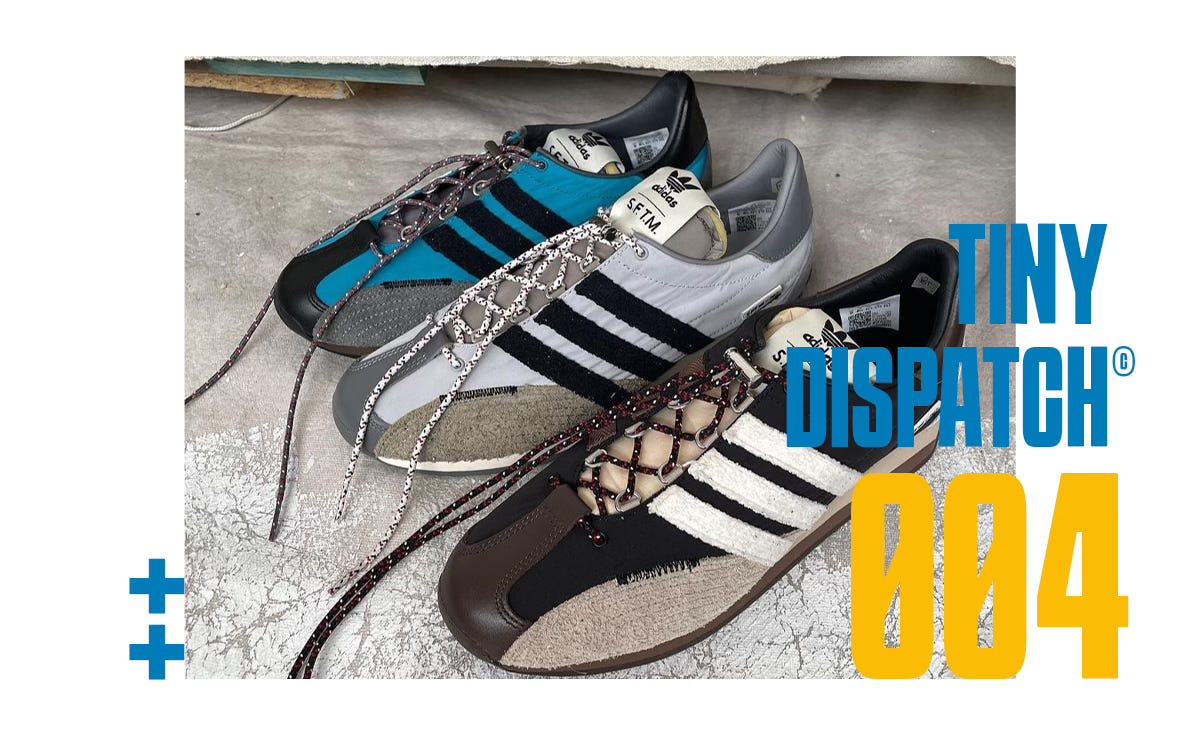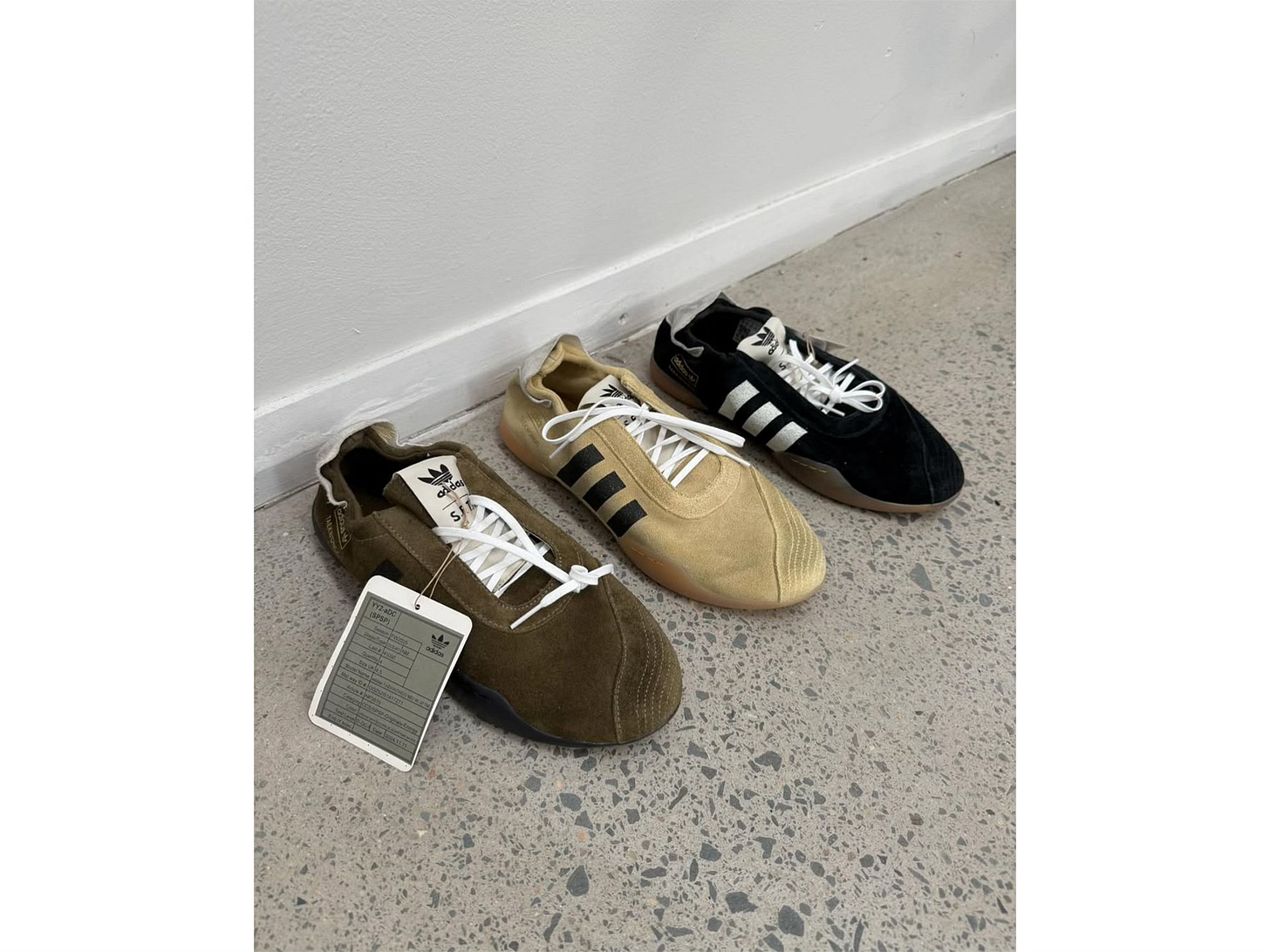Collabs have become lazy. Same sneaker, new colorway, celebrity co-sign. But Song for the Mute is reminding us what it means to push out a meaningful collaboration. The Australian brand isn’t just tweaking old adidas silhouettes—it’s infusing them with its own world, turning each sneaker into an artifact, not just a product. Known for its avant-garde sensibilities and deeply personal storytelling, SFTM has redefined what it means to collaborate—not just with adidas, but within the sneaker industry as a whole.
Redesigning Beyond Colourways
Founded by Melvin Tanaya and Lyna Ty, Song for the Mute (SFTM) has always been the outsider. Their collections draw from personal memories, family ties, and the textures of everyday life. Their partnership with adidas follows the same ethos, bringing distortion, reconstruction, and reimagination to the table.
Take their first collaboration in 2022 — a series of footwear and apparel that blurred the line between utility and art. The Shadowturf bore unmistakable SFTM DNA, with unconventional materials, tactile finishes, and subtle details that rewarded those who looked closer. They didn’t just design sneakers; it felt like something excavated from a distant memory.
Even in 2024, their Country and Adistar Cushion reworks are less about redesigning and more about reframing—turning historical silhouettes into tactile, emotional objects.
A League of Its Own
In the crowded space of adidas collaborations, what makes SFTM special is their ability to merge their world with adidas’ heritage, resulting in something entirely new. They don’t just tweak existing silhouettes or slap on a logo—they infuse their philosophy into every detail. It’s this thoughtful approach that makes their collaborations memorable—not just as products but as creative expressions. We can clearly see this in their 2024 projects where they have reworked some adidas classics like no other brand has.
adidas’ Collaborative Landscape: A New Balance?
SFTM’s success comes at a time when adidas has been redefining its collaborative strategy. With the loss of Kanye West, one of the most culturally influential figures in sneakers, many wondered if adidas could maintain relevance in the space. Fear of God was supposed to be adidas’ next big cultural force—but it hasn’t hit. Not because Jerry Lorenzo lacks vision, but because Fear of God isn’t the movement it once was.
The truth is, adidas doesn’t need another Kanye. The brand has shifted to a more balanced, diverse roster of collaborators who speak to different audiences. Bad Bunny, for instance, has carved out a lane in Latin culture and global pop, while Sean Wotherspoon and Wales Bonner bring their own distinct aesthetics to the table.
This strategy—of amplifying niche voices rather than relying on a single megastar—has allowed adidas to expand its cultural footprint. Collaborations with Prada, Gucci, and Balenciaga offer high-fashion appeal, while SFTM proves that even a smaller, indie label can have a massive creative impact.
The Future Belongs To The Thoughtful
Looking ahead, SFTM’s upcoming designs are already generating buzz. Early leaks suggest they’ll continue to push boundaries, blending the brand’s avant-garde sensibilities with adidas’ rich history. As the industry trends toward storytelling and deeper connections with consumers, SFTM feels perfectly positioned to lead this charge.
adidas’ collaborative portfolio may not have the singular cultural juggernaut it once did, but it’s better for it. With partners like Bad Bunny, Song for the Mute, and Wales Bonner, the brand is proving that diversity in voices creates a stronger, more enduring cultural resonance.
In a landscape where collaborations often feel disposable, Song for the Mute is showing that thoughtfulness and authenticity still matter. And for adidas, that might just be the best partnership decision they’ve made in years.










